The pandemic affected everyone’s lives. It shifted both how we work and how we think about work. But did the pandemic really change everything?
In 2019, Lisa Taylor, Challenge Factory’s president, co-authored The Talent Revolution: Longevity and the Future of Work. In it, she describes five drivers that were shaping the Future of Work before the pandemic: demographics, career ownership, the freelance economy, the rise of platforms, and AI and robotics.
The Future of Work is complex and messy. In her research, however, Lisa found that leaders, organizations, and employees are consistently wrestling with and influenced by a clear, definable set of themes. These five drivers are a model for making sense of today’s career, workplace, workforce, and labour market dynamics. They underlie and persist through challenging world events and ongoing societal changes, like the pandemic, climate change, and social justice.
In 2022, we wanted to know if the five drivers still hold up.
We tested them with clients, partners, and community leaders. We filtered organizational challenges and societal changes through them to see whether the five drivers 1) still capture the reality of work dynamics, and 2) help us better understand how to solve problems and inform decision-making.
The five drivers do hold up ‘after’ the pandemic, with some updated language to better reflect the shifts in today’s world of work. Check out the refreshed five drivers below, from our article in Workforce Architecture, Challenge Factory’s digital magazine and research exchange.
Want more great Workforce Architecture content? Become a free member of Challenge Factory’s community to access all the magazine issues.
So, here’s an important ‘flip’ to keep in mind: The pandemic didn’t actually change everything.
The talent revolution was already causing seismic shifts in the world of work before the pandemic. We can still make sense of changing work dynamics using the same key drivers. Even though the pandemic brought us disruption and uncertainty, we don’t have to throw out our existing tools and strategies for tackling Future of Work challenges. Reminding ourselves of this can help us build sustainable approaches to work even when change feels overwhelming.
Let’s explore an example of this from Challenge Factory’s own work.
Filtering Challenge Factory’s B Corp Certification through the five drivers
The future of Challenge Factory’s work is being shaped by our recent certification as a B Corporation. As an experiment, we used the five drivers to consider how our B Corp status and obligations will impact the work we do.
Here’s how the five Future of Work drivers help us understand what it will mean to focus on measuring our company’s entire social and environmental impact.
 Demographics and longevity
Demographics and longevity
How are work, careers, and labour markets changing as populations age and social values continue to shift?
This Future of Work driver helps us clarify and articulate the positive impact we want to have on the world. As part of our certification, we qualified for two Impact Business Models (IBMs) that align our business strategy and impact. First, our work supports purpose-driven and underserved organizations and populations. We are measured on how well we support organizations working on the frontline with neglected demographics. Second, our work focuses on workforce development. We prioritize and provide quality jobs and job training to underemployed populations. In this way, both what we do as an employer and what we do to bust myths and break down workplace-related stigma associated with hidden talent pools like older workers and military Veterans is core to the impact we have.
 Career ownership and employment relations
Career ownership and employment relations
Who owns the individual’s career, and how are careers and relationships between employers and employees changing?
Becoming a B Corp meant changing our legal articles of incorporation. This required us to consider how material business decisions impact workers and the community. For our own employees, we’re obligated to have increased transparency and detailed policies that often aren’t implemented within small businesses of our size. And as a provider of services that impact workers within client organizations and our broader community, we’re obligated to model how workplace approaches can do good for both businesses and workers, including the individual’s career ownership and the relationship between employer and employee.
 Flexible and emerging work models
Flexible and emerging work models
What impacts are diverse work arrangements, workplaces, and workspaces having on culture, productivity, and leadership?
The documentation we had to submit to B Labs, the global nonprofit that leads the B Corp certification process, included detailed policy and salary information. We had to indicate how we operate and that we provide a fair wage for all employees. For example, we were challenged to consider what else should be in our employee handbook to address all the work arrangements that we can support. By recertifying every three years, including a refreshed public scorecard, we are continually challenged to consider how our team gets work done, who we partner with, and what work standards we want to uphold.
 Platform-based business models
Platform-based business models
In the broadest sense, how can industries, organizations, and individuals leverage platforms and platform-based environments—both technological and human?
The B Corp community is comprised of more than 5,000 organizations around the world. Joining this community means we are active participants in a new platform that is focused on using business as a force for good. We have new global tools, reach, and access to expertise that will increase the value and impact of our work with our clients. This Future of Work driver reminds us it is important that we prioritize leveraging the power of the platform and not treat it as a discretionary option.
 Technology and automation
Technology and automation
What’s the human impact of new and evolving technologies?
Even a certification process can be better understood through this Future of Work driver. One metric we had to report on was the percentage of our supply chain partners who are local to our head office. This single question had us deeply review everyone we do business with, from Google powering our email to the provider of the coffee we drink in the office. Through this review, choices and trade-offs we’ve made as a result of advances in technology and automation were laid bare. We were challenged to consider how to be as innovative as possible with technology and automation—and begin with the premise that tangible and realistic shifts in this area can be done to make things better for workers, communities, other stakeholders, and the environment.
What challenges do you want to run through the five drivers?
We would be thrilled to help you through the process. Contact us to learn more about how the five drivers can be a useful model for understanding the workplace challenges facing your organization, leadership, and people.

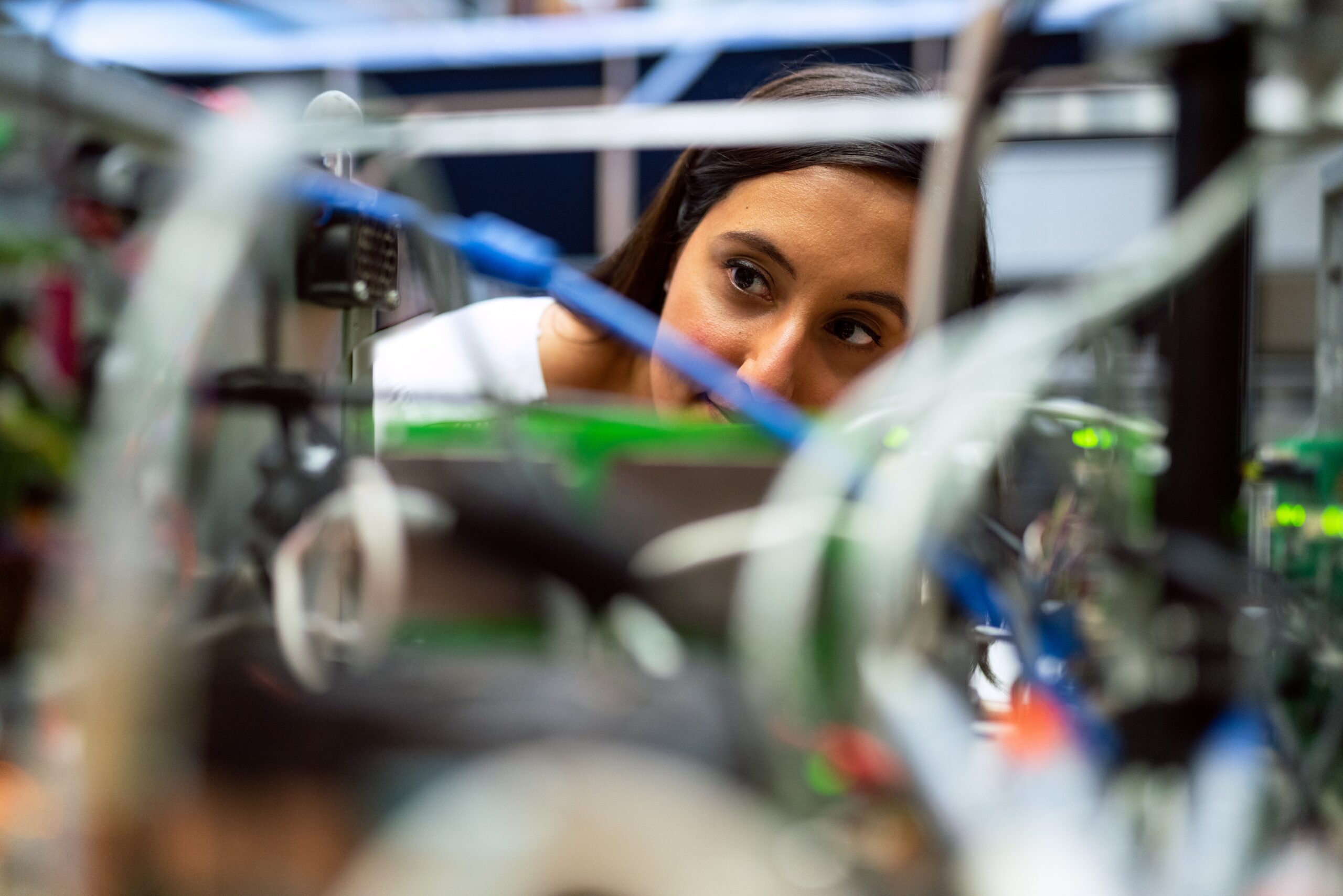
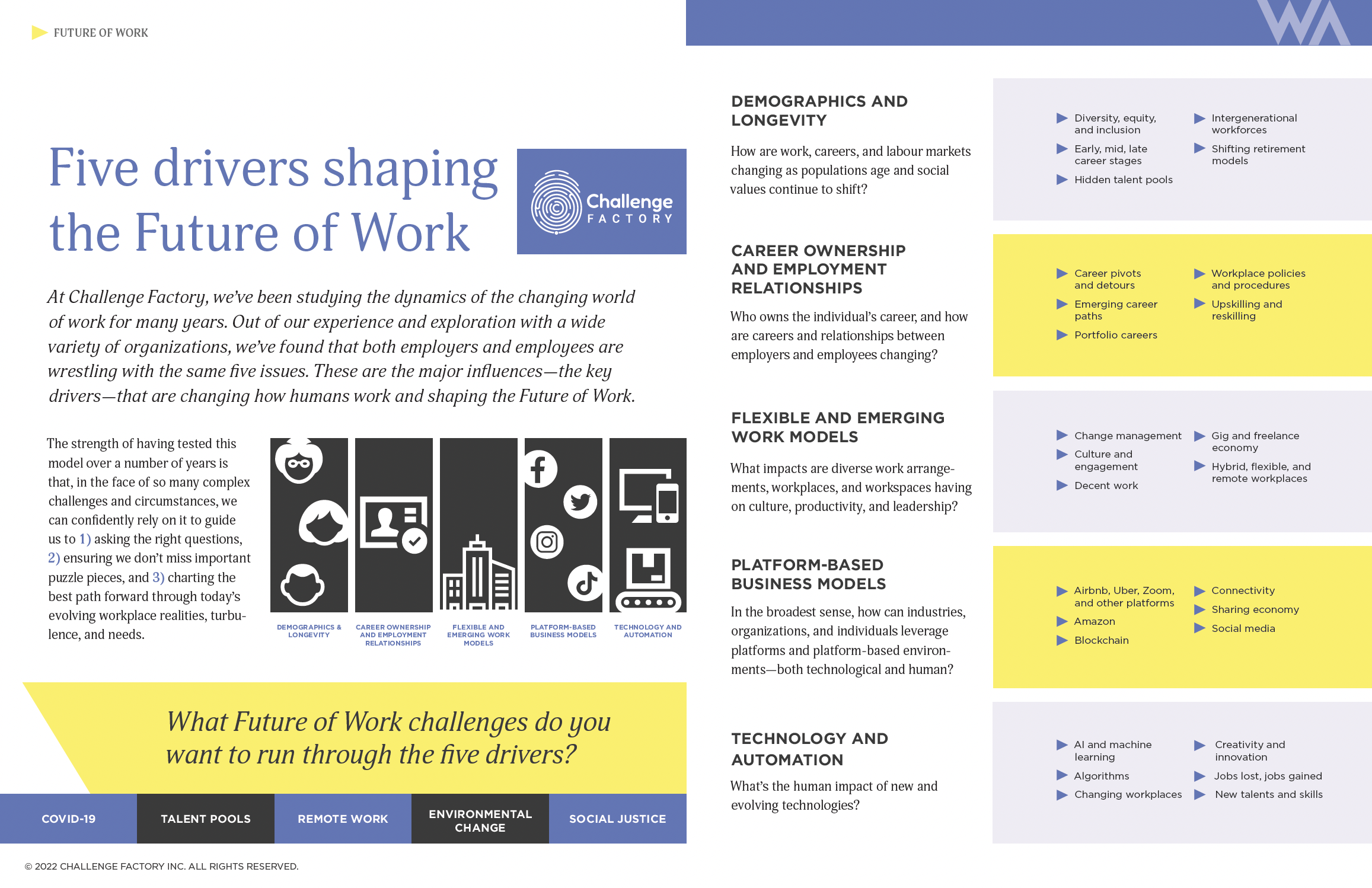
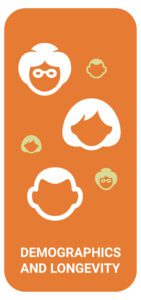 Demographics and longevity
Demographics and longevity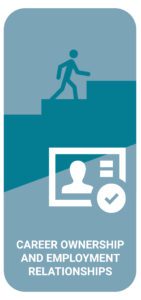 Career ownership and employment relations
Career ownership and employment relations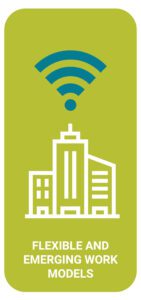 Flexible and emerging work models
Flexible and emerging work models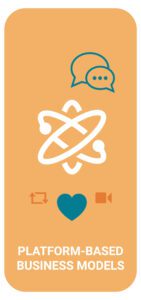 Platform-based business models
Platform-based business models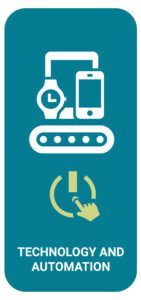 Technology and automation
Technology and automation